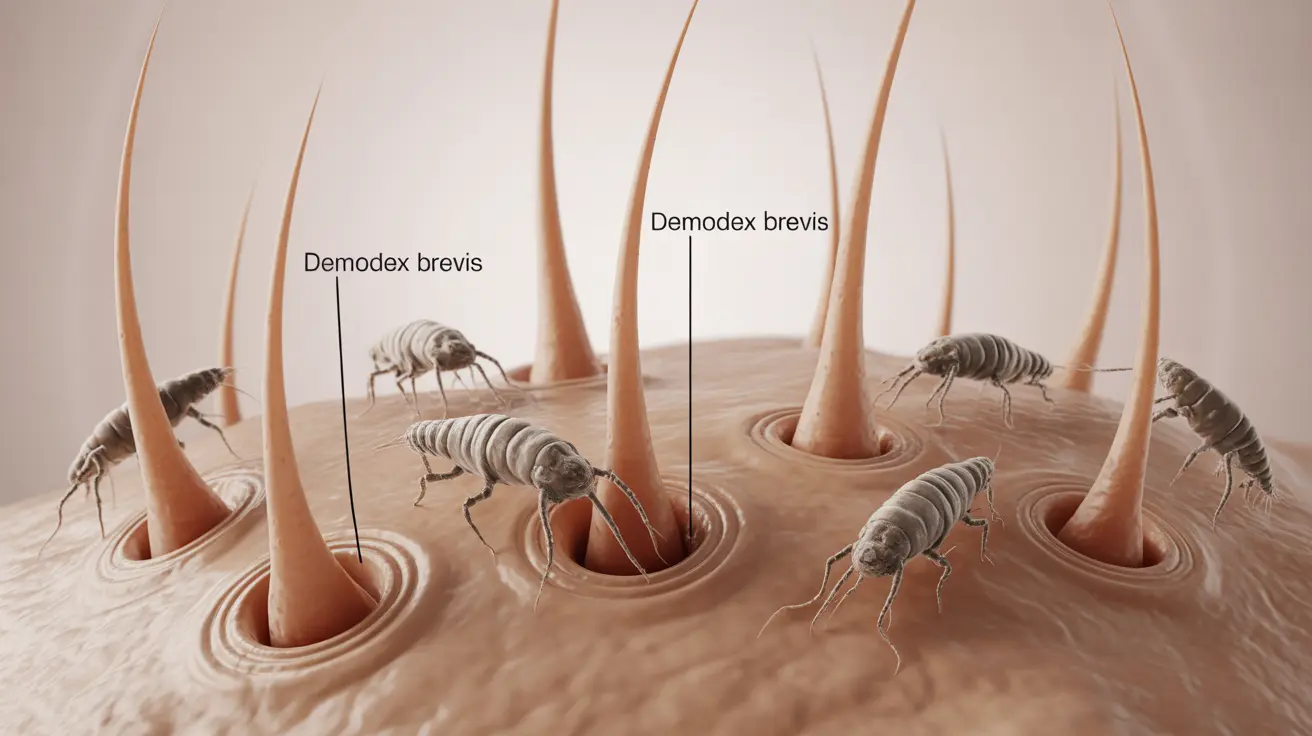Demodex brevis is a microscopic mite that naturally inhabits human skin, particularly in the oil glands and hair follicles. While these tiny organisms are generally harmless in small numbers, an overgrowth can lead to various skin complications and uncomfortable symptoms. Understanding these mites and their potential impact on skin health is crucial for effective management and treatment.
This comprehensive guide explores the key aspects of Demodex brevis infestations, including recognition of symptoms, diagnostic approaches, and evidence-based treatment options. We'll also discuss prevention strategies and the relationship between these mites and various skin conditions.
Identifying Demodex Brevis Infestations
Demodex brevis mites typically reside deeper in the skin than their cousins, Demodex folliculorum. When their population increases beyond normal levels, they can trigger various skin reactions and symptoms:
- Redness and inflammation
- Itching and burning sensations
- Rough or scaly skin texture
- Increased skin sensitivity
- Small bumps or pustules
- Enlarged or clogged pores
These symptoms often appear more prominently on the face, particularly around the nose, cheeks, and forehead, where oil glands are most concentrated.
Diagnostic Procedures and Clinical Assessment
Healthcare providers use several methods to diagnose Demodex brevis infestations and distinguish them from other skin conditions:
Skin Scraping Analysis
This common diagnostic technique involves carefully scraping the affected skin area and examining the sample under a microscope to identify and count Demodex mites.
Standardized Skin Surface Biopsy
This more precise method uses specialized adhesive tape to collect and analyze skin samples, providing detailed information about mite density and distribution.
Treatment Approaches for Demodex Brevis
Several treatment options are available to manage Demodex brevis infestations effectively:
Medical Treatments
- Tea tree oil-based products
- Antiparasitic medications
- Topical metronidazole
- Prescribed acaricides
Supportive Care
Supporting treatments may include gentle cleansing routines, avoiding oil-based products, and maintaining proper skin hygiene to prevent mite proliferation.
Prevention and Risk Reduction
Taking proactive steps can help minimize the risk of Demodex brevis overgrowth:
- Regular facial cleansing with appropriate products
- Avoiding sharing facial products or towels
- Managing underlying skin conditions
- Maintaining a healthy immune system
- Using clean pillowcases and facial cloths
Relationship with Other Skin Conditions
Demodex brevis can interact with various skin conditions, potentially exacerbating symptoms of:
- Rosacea
- Acne
- Perioral dermatitis
- Seborrheic dermatitis
Frequently Asked Questions
What are the common symptoms and signs of a Demodex brevis mite infestation?
Common symptoms include facial redness, itching, burning sensations, rough skin texture, small bumps or pustules, and increased skin sensitivity. These symptoms typically appear on areas rich in oil glands, such as the face, particularly around the nose and cheeks.
How is Demodex brevis diagnosed and distinguished from other skin conditions?
Diagnosis typically involves skin scraping analysis or standardized skin surface biopsy, where samples are examined under a microscope. Healthcare providers also consider clinical symptoms and rule out other skin conditions through differential diagnosis.
What are the most effective treatments for reducing Demodex brevis mite populations on the skin?
Effective treatments include tea tree oil-based products, antiparasitic medications, topical metronidazole, and prescribed acaricides. Treatment success often requires a combination approach and consistent application over several weeks.
How can I prevent or reduce the risk of Demodex brevis overgrowth on my skin?
Prevention strategies include maintaining good facial hygiene, using appropriate cleansing products, avoiding sharing facial items, regularly changing pillowcases, and managing underlying skin conditions that might promote mite proliferation.
Can Demodex brevis mites cause complications or worsen existing skin conditions like rosacea or eczema?
Yes, Demodex brevis mites can exacerbate existing skin conditions, particularly rosacea and seborrheic dermatitis. They may trigger inflammation and contribute to symptom flare-ups in susceptible individuals.




